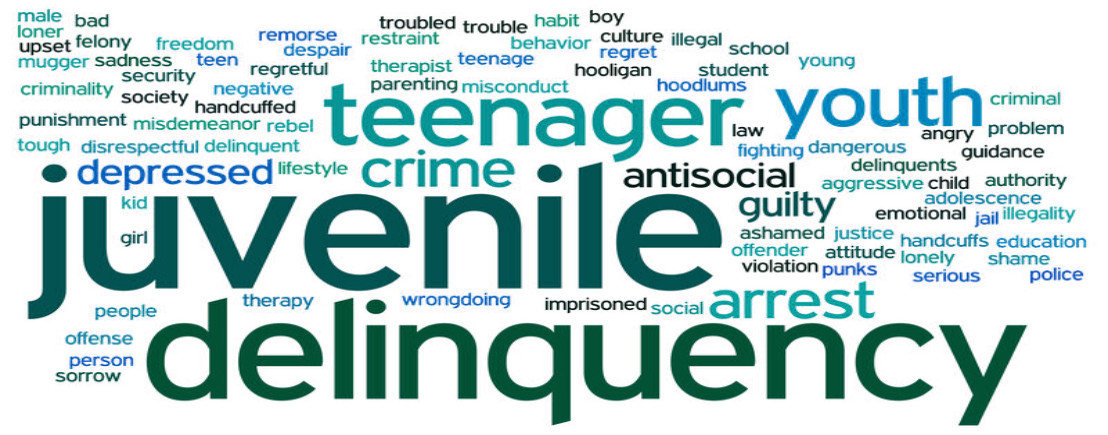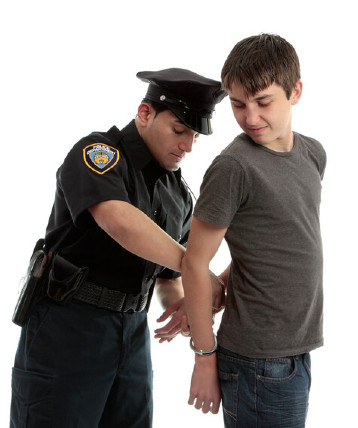
Common Juvenile Crimes
Truancy: Persistent and intentional absence from compulsory schooling.
Underage Drinking: Consuming alcohol before the legal drinking age is a common form of juvenile offense.
Drug Use and Sales: This can involve the use, possession, or distribution of illegal substances.
Vandalism: This includes acts like graffiti, damaging property, or any form of defacement.
Shoplifting or Petty Theft: Many young offenders start with minor theft, such as shoplifting from stores.
Burglary: Breaking into homes, businesses, or other premises with the intention to steal or commit other offenses.
Assault: This encompasses any form of physical violence towards another person, which can range from minor scuffles to more serious attacks.
Cyber Crimes: With the increasing use of technology, cybercrimes, such as cyberbullying, hacking, or online theft, have become more common among youth.
Motor Vehicle Theft: The theft of automobiles, motorcycles, or any other kind of motor vehicles.
Arson: Deliberately setting fire to property.
Gang-related Crimes: This includes various crimes committed as part of a gang initiation or activities.
Child Criminals

Understanding the Scope of Juvenile Crime
Juvenile crime, typically defined as offenses committed by individuals under the age of 18, constitutes a significant proportion of overall criminal activity globally. The incidence of Juvenile crime spans across various crimes such as petty theft, vandalism, assault, drug abuse, and in severe cases, violent crimes including murder. The roots of juvenile delinquency can often be traced back to a complex interplay of social, economic, psychological, and family factors. Understanding this intricate web is crucial in addressing the issue and implementing effective solutions.
The Influence of Family Environment
The family environment plays a pivotal role in shaping a child's behavior. Children who are raised in an unstable environment or suffer from neglect or abuse are at a greater risk of engaging in criminal activities. The absence of appropriate role models or supervision, exposure to domestic violence, and parents with criminal records can exacerbate the likelihood of a child developing antisocial behaviors. Conversely, a supportive and nurturing family environment can act as a protective barrier against criminal tendencies.
Role of Socioeconomic Factors
Socioeconomic factors, particularly poverty and lack of education, can have a significant impact on the likelihood of a Juvenile engaging in criminal activities. Children growing up in impoverished conditions often have limited access to resources and opportunities, leading them to resort to crime as a means to survive or escape their circumstances. The lack of quality education further limits their potential for social mobility, reinforcing a cycle of crime and poverty.
Influence of Peer Pressure and Gang Culture
Peer pressure and gang culture are also critical elements in Juvenile crime. Adolescents, in their quest for acceptance and identity, may succumb to pressure from friends involved in criminal activities or be attracted to the sense of belonging that gangs seem to offer. Gangs often provide a sense of community, protection, and power, which can be alluring to those who feel marginalized or powerless in their regular lives.
Psychological Factors and Juvenile Crime
Psychological factors, including personality disorders, impulse control issues, and other mental health problems, can contribute to Juvenile criminal behavior. Young people suffering from mental health issues may have difficulty regulating their behavior and may act out in ways that lead to criminal offenses. Furthermore, untreated trauma or stress can manifest in destructive behaviors, including crime.
The Impact of Substance Abuse
Substance abuse is another significant factor in Juvenile criminal behavior. Adolescents who abuse drugs or alcohol are more likely to engage in criminal activities, either due to the impairing effects of substances or to support their addiction. In many cases, substance abuse is both a cause and a consequence of criminal behavior, creating a vicious cycle that can be challenging to break.
Prevention and Intervention Strategies
Efforts to prevent Juvenile crime should be multifaceted, addressing the multitude of factors contributing to delinquency. Family-based interventions, improving the quality of education in disadvantaged areas, creating opportunities for youth to engage in positive social activities, and providing mental health support are just some strategies that can help mitigate Juvenile crime rates. Early detection of risk factors and timely intervention can significantly help steer at-risk youth away from criminal behavior. Most youth who commit crimes regret what they did after reaching adulthood. Luckily, there are legal ways to erase a juvenile criminal record through expungement. An expungement lawyer can review the record to see if the person qualifies.
A Society-Wide Approach to Juvenile Crime
Addressing Juvenile crime is not merely a task for the criminal justice system; it requires a society-wide approach. Communities, schools, families, and social services must work together to create an environment that supports the healthy development of young people. By understanding the complexities of Juvenile crime, we can develop more effective prevention and intervention strategies, ultimately contributing to safer communities and better futures for our youth.